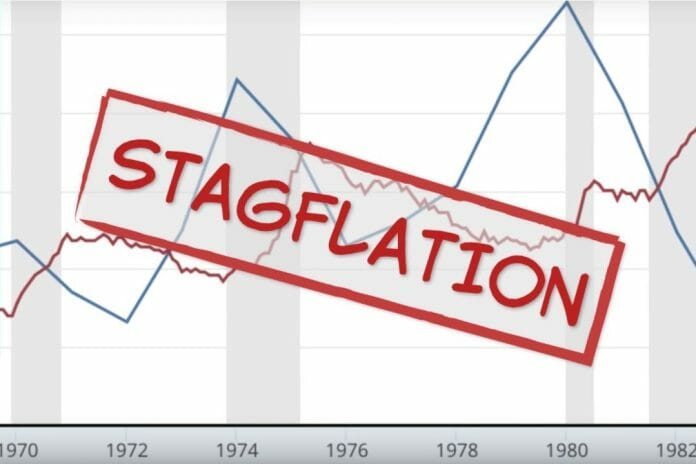Slow economic growth and rising prices are not a good combination.
With the UK in the grip of slow economic growth and rising prices, the threat of stagflation has returned for the first time since the 1970s.
Stagflation is an unpleasant combination of rising prices (inflation) and weak or non-existent economic growth (stagnation), and typically leads to fewer jobs and lower wages.
But in purely supply and demand economic terms it’s a combination that isn’t supposed to happen – prices shouldn’t go up when we all have less money to spend.
MoneyWeek’s executive editor John Stepek said: “The reality is the UK is already somewhat in stagflation. The economy is slowing, and inflation remains high. This is partly due to the nature of what is driving inflation. If individuals have to spend more on their energy bills, it means they have less to spend on other things. So that in itself is slowing the economy down. On top of that you have mortgage rates rising alongside interest rates.
“From an individual’s point of view, a stagflationary environment really means that the cost of living – filling your car up, keeping your lights on – is going up, but your wages might not be keeping up, or your employment situation might look more precarious than it did. The last time this happened was in the 1970s and it wasn’t pleasant.”
The pressure of stagflation isn’t just felt by households, it is squeezing firms too. Between 1 April and 30 June 2022 there were 5,629 registered company insolvencies – 81% higher than in the same quarter last year, according to the Insolvency Service.
“The broader economic outlook is shaky with energy prices set to rise sharply in October, uncertainty around the war in Ukraine and rising interest rates from the Bank of England to combat inflation. The IMF forecasts GDP in the UK to be the slowest among G7 nations next year,” Victoria added.
What can central banks, policymakers and government do about stagflation?
It is a tricky problem for governments and economists to solve because solutions for slow growth, such as lowering taxes and interest rates, tend to worsen inflation as those measures increase demand which drives up prices.
As John Stepek explains: “Stagflation is bad news for central banks, because the usual solution for a weakening economy is to cut interest rates in the hope of stimulating more activity, but the usual answer for high inflation is to raise interest rates in order to rein in activity.”
For example, if the Bank of England raises interest rates in an attempt to bring inflation under control, it reduces your spending power, lowering consumer demand and potentially bringing about a recession.
“There is no perfect tool and policymakers and central bankers must tread a fine line,” says Victoria Scholar
“The Bank of England’s interest rate hikes should go some way to alleviating the inflationary pressures in the economy. However, it is far from a perfect tool, particularly to tackle the type of inflation our economy is dealing with right now, which is imported price increases driven by supply-side factors such as a sharp rise in commodity prices (rather than demand side inflation, which monetary policy is much better at targeting.
“The central bank needs to tread a fine line. If it moves too quickly any aggressive tightening may inadvertently induce a recession.
“Fiscal stimulus is another method, through tax cuts and government spending to try to kickstart an economy. However, this could come with the unwanted side effect of worsening inflation. At the moment, the public purse is in a difficult position, with billions having been spent during the pandemic on expensive programmes such as track and track, the vaccine roll-out and the furlough scheme. Therefore, focusing on sound money and fiscal prudence may be the right course of action, rather than borrowing and worsening the UK’s public sector debt levels.”
How can you prepare for stagflation?
Kalpana Fitzpatrick, editor of The Money Edit and author of Invest Now, says: “Persistent high inflation is not good news for cash savings, as the value of your cash can erode quickly if it can’t keep up with price rises.
But it is still important to hold cash savings, especially during turbulent times. Everyone should look to hold onto at least six months’ worth of income as emergency cash savings. This is money you can use to help pay for unexpected costs – anything from losing your job to a broken boiler.
Kalpana advises: “If you don’t have an emergency fund, now is the time to build one as we continue to face extortionate price rises and stagflation. Always keep emergency money in an easy-access savings account.” “If you have investments, stagflation could mean a squeeze on profit margins and you may see the value of your investments go down. Although this can cause concern, the key thing is not to panic or take your money out. Stock market ups and downs are normal in investing, and the best way to smooth out the returns is to continue drip-feeding small amounts into your investments each month and ride out the storm.”









